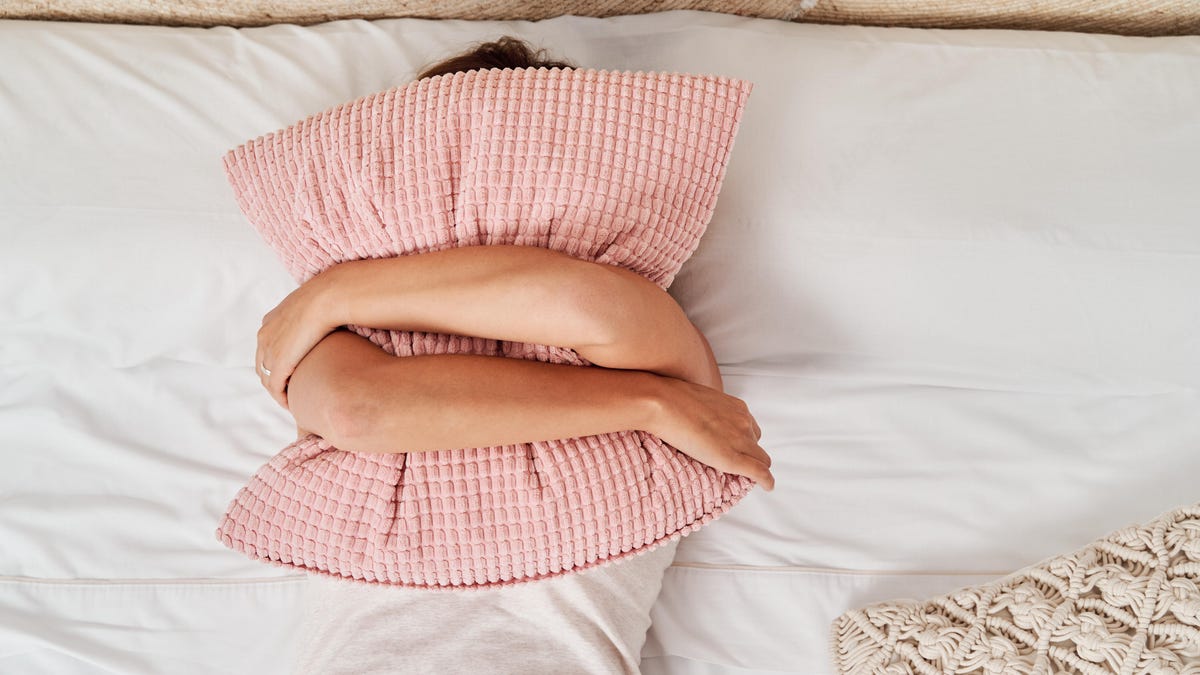 Why You Can Trust CNET
Why You Can Trust CNET Use This Meditation Method to Fall Asleep in 10 Minutes or Less
Stop counting sheep. These tricks can help lull you to sleep.

If you struggle to fall asleep at night, these tips should help do the trick.
It takes around 10 to 20 minutes for the average person to fall asleep at night, but the 70 million Americans who live with sleep troubles may say otherwise. Oftentimes, poor sleep latency (the amount of time it takes to fall asleep) is the result of anxiety or stress that debilitates you from having a mindset prepared for sleep.
You may be harming your quality of rest if it takes you longer than 30 minutes to fall asleep. And in turn, poor rest can have a negative effect on your mood, metabolism, cognitive skills, your immune system and overall health. So it's important to find ways to calm your body and mind long enough that you feel relaxed enough to take a snooze.
Continue reading to learn how the military method, meditation and muscle relaxation can improve sleep latency and lull you to sleep faster than you ever could counting sheep.
For more help improving your quality of rest, check out these seven common sleep myths that may be keeping you from good sleep and six habits you can change for better shut-eye.
Fall asleep using meditation
Progressive muscle relaxation is a form of meditation that effectively helps you feel sleepy. One study involving 32 young volunteers analyzed the effects of progressive muscle relaxation. The results revealed that PMR was successful in lowering the heart rate, improving sleep efficiency and sleep latency. The goal is to use mindfulness, breathing techniques and muscle relaxation to relieve stress and promote a restful sleep.
- Step 1: Lie in a comfortable sleeping position and close your eyes. Take deep breaths and slowly inhale and exhale.
- Step 2: Scrunch your face and tense the muscles for 10 seconds. After, release tension and return to taking slow, deep breaths.
- Step 3: Move down to the shoulders and flex them for 10 seconds. Release and return to taking deep breaths.
- Step 4: Repeat this movement with the other parts of your body ending with the feet. Avoid any areas where you might experience pain when you tense your muscles.
Fall asleep with the military method
Individuals in the military have irregular sleep schedules, early morning rises and not-so-cozy sleeping quarters. In response, members created the "military method" to quickly and efficiently fall asleep.
- Step 1: Lie in your ideal sleeping position. Starting with the face, relax the different muscles, including your brows, lips, eyelids and mouth.
- Step 2: Move down to your arms. Start with the shoulders and keep them relaxed, followed by your elbows and then wrists.
- Step 3: Relax your chest and take deep, rhythmic breaths.
- Step 4: Move down your body and focus on relaxing your bottom-half, from your waist down to your feet.
- Step 5: Use guided imagery to imagine a tranquil scene that makes you feel relaxed and happy. This might be on a beach by the ocean, a quiet and breezy meadow or even a comfortable room. If stressful or anxious thoughts disrupt your flow, attempt to move past them by reshifting your focus back to visualization or muscle relaxation.
Always follow the 20-minute rule
If you're lying in bed trying to fall asleep and 20 minutes pass, don't keep lying there. The longer you lie in bed without falling asleep, the more you stress that you aren't falling asleep. Get out of bed and practice a relaxing activity or hobby until you feel yourself getting drowsy. This may include:
- Reading
- Listening to soft music
- Gentle yoga stretches
- Taking a bath
- Drinking herbal tea

